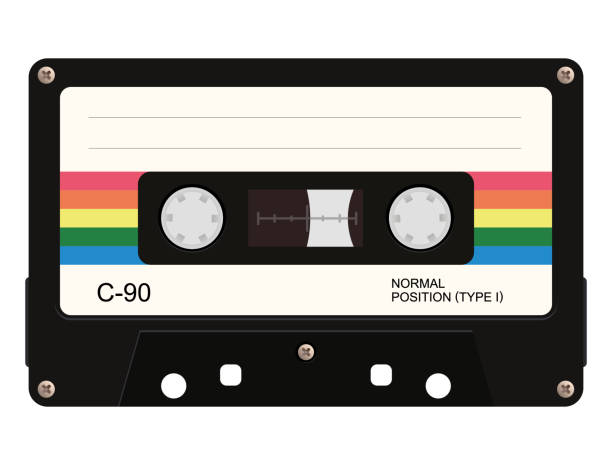Despite being somewhat of a “dated” method of audio recording in the far future of 2023, cassettes do have a major advantage over alternatives: they’re really cool. Additionally, they’re relatively easy to use once you get the hang of it! That being said, however, there are a few things to keep in mind when using them, and certain pieces of advice that I, for one, wish I’d known when I started. As such, this article will serve as a beginner’s guide for the fledgling cassette enthusiast. I’d also like to make note of the fact that this guide will be keeping both those who are interested in recording and those who simply wish to listen to prerecorded tapes in mind.
An important thing to keep in mind when using cassettes is what they actually use to record. Every cassette contains a long reel of magnetic tape wound up between two spools. When a tape recorder is running, the spools are turned in a way that moves the tape from one side to the other. If it’s recording, audio will be recorded by the tape as it moves between the spools.
Most tape recorders/players have six main functions: Record, Play, Rewind, Fast Forward, Stop/Eject, and Pause. They’re fairly straightforward, and essentially perform the functions they describe. The Stop/Eject button’s function depends on whether the tape recorder is running or not. If it is, it stops running, and if it isn’t, it opens the recorder. This allows the user to place a cassette inside, or remove it if there’s one in there already.
So here comes the fun part! Once you put in a tape, hit the Record button and record to your heart’s content. Whether you’re recording a journal, a sweet mixtape, or a secret third option, here are a few tips to keep in mind:
- You may notice the first part of the tape is clear. Nothing is recorded onto this part, and as such it is prudent to let it play for a few seconds before recording. Audio is recorded once the tape passing through the middle is a dark color!
- Most tape recorders come with both an external and built-in microphone. It’s really up to personal preference which you use. However, in my experience, the built-in microphone can be a little finicky due to the fact that moving it even the slightest amount gets picked up by the microphone.
- You can record over previously recorded tapes. This is helpful if you want to reuse a tape, but if you want to preserve whatever’s recorded on there, the top of every tape has two tabs that can be popped up. Most (if not all) recorders will detect this and won’t record over the tape.
So that’s basically all! The only other thing I’d mention is that when not in use, tapes should be stored in the boxes they came in. They usually come with stickers and labels to mark which ones are which. It’s also prudent to place them vertically and next to each other, as stacking a bunch on top of each other can place a lot of pressure on the tapes at the bottom. Ok, now that’s everything. Hopefully, this guide proves to be helpful. Best of luck!








